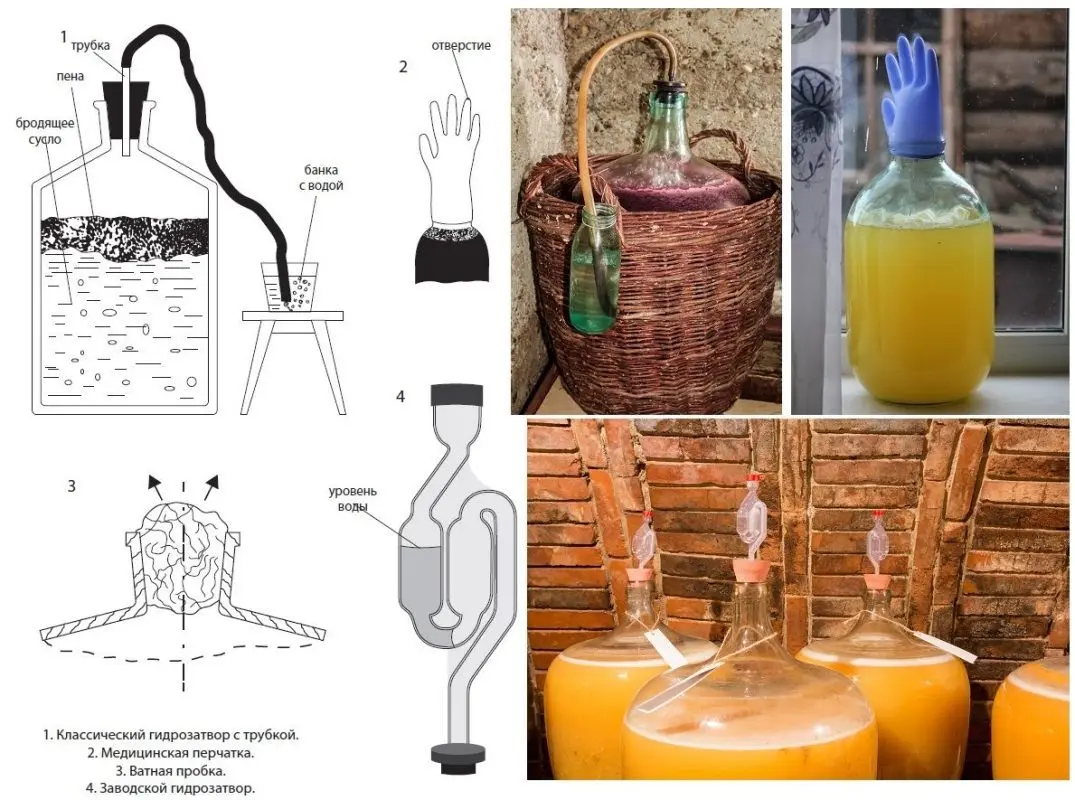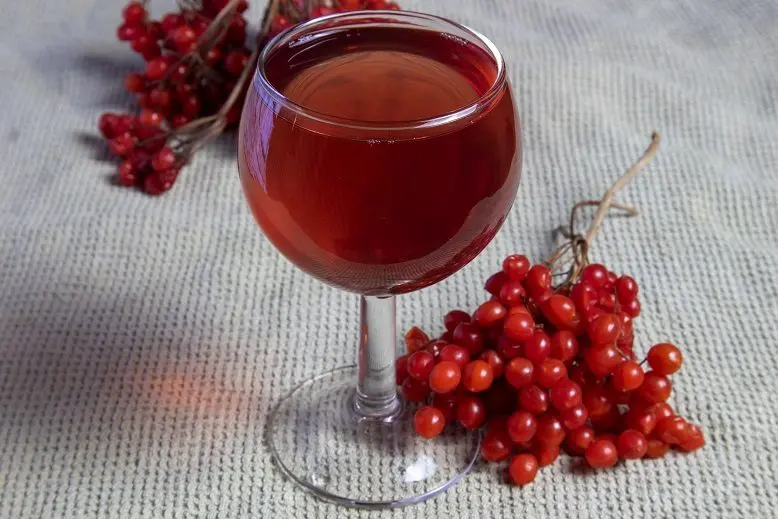From viburnum berries you can make excellent homemade wine with an original aroma and slightly tart taste. In moderation, the drink is good for health, strengthens the immune system and contains vitamins. We will consider a proven recipe for viburnum wine and a complete cooking technology.
First you need to carefully sort out the raw materials. Only ripe berries without signs of rot and mold are suitable for winemaking (frozen ones are also suitable). Even one bad berry can spoil the whole wine. Used containers should be steamed with boiling water and wiped dry to prevent contamination of the wort by pathogenic microorganisms.
Ingredients:
- viburnum berries – 5 kg;
- water – 10 liters;
- sugar – 2 kg;
- raisins (unwashed) – 30-50 grams.
viburnum wine recipe
1. Mash the sorted berries and pour them into a fermentation container (jar, barrel, etc.). It is better not to wash the viburnum, leaving wild yeast on the surface, which activates fermentation.
2. Add to the berries: all the water, 500 grams of sugar and a handful (30-50 grams) of unwashed raisins. Mix. Raisins are needed for safety net in case there is no yeast left on viburnum berries.
3. Bandage the neck of the container with gauze and leave to ferment for 3-4 days in a dark place at room temperature. Once a day, mix with a clean hand, drowning the pulp – the skin and pulp that have floated to the surface.
4. If there are signs of fermentation (foam, hiss), strain the juice through gauze, squeeze the cake well. Add 500 grams of sugar, mix. Fill the fermentation tank to a maximum of 70% of the volume so that there is room for new portions of sugar, foam and carbon dioxide.
5. Install a water seal on a vessel with future viburnum wine. Instead of a water seal, you can use an ordinary medical glove with a small hole (made with a needle) in one of the fingers. Move the bottle to a dark place with a temperature of 18-28°C.

6. On the 4th and 8th day from the moment of straining, add the remaining sugar (500 grams at a time). To do this, remove the water seal, drain 0,5 liters of fermented juice through a thin tube, dissolve sugar in it, pour the resulting syrup back into the fermentation tank, install a water seal.
7. After 25-60 days, the fermentation will stop (the glove will deflate or the water seal will stop bubbling, sediment will appear at the bottom), pour the young wine into another container, trying not to touch the sediment at the bottom.
If the fermentation lasts longer than 50 days, it is necessary to filter the wine from the sediment and leave it to ferment under the shutter, otherwise bitterness may appear.
Taste the drink, if desired, add sugar to taste. You can also increase the strength of the wine with vodka or alcohol by adding 2-15% of the volume. Strong wine keeps better, but it has a harsh taste.
It is desirable to fill the containers to the top (so that there is no contact with oxygen) with young viburnum wine. Seal tightly and transfer to the refrigerator or cellar for maturation. The recommended temperature is 6-16°C. If at the previous stage the drink was sweetened with sugar, it is better to keep the container under a water seal for the first 7-10 days of aging in case of repeated fermentation.
Ripening time – 2-5 months. As sediment appears (once every 15-20 days, then less often), filter the wine by pouring from one container to another.
8. After a couple of months, the drink can be bottled.
If stored at a temperature of +5-12°C, the shelf life of homemade viburnum wine is up to 3 years. Fortress – 9-12 degrees.

PS The recipe was changed on 15.04.2016/XNUMX/XNUMX, comments before this date are not relevant.









